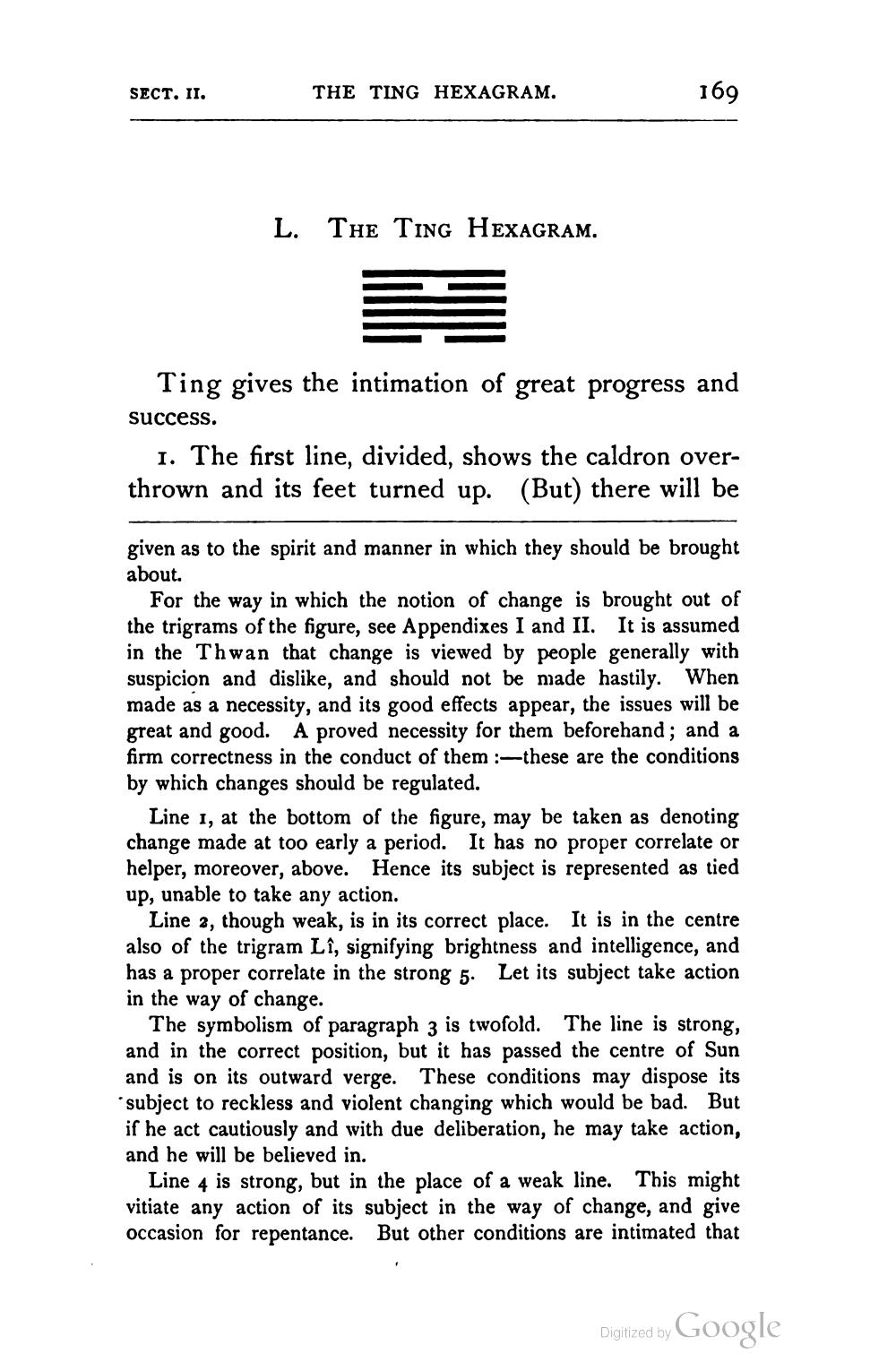________________
SECT. II.
THE TING HEXAGRAM.
169
L. THE TING HEXAGRAM.
Ting gives the intimation of great progress and success.
1. The first line, divided, shows the caldron overthrown and its feet turned up. (But) there will be
given as to the spirit and manner in which they should be brought about.
For the way in which the notion of change is brought out of the trigrams of the figure, see Appendixes I and II. It is assumed in the Thwan that change is viewed by people generally with suspicion and dislike, and should not be made hastily. When made as a necessity, and its good effects appear, the issues will be great and good. A proved necessity for them beforehand; and a firm correctness in the conduct of them :-these are the conditions by which changes should be regulated.
Line 1, at the bottom of the figure, may be taken as denoting change made at too early a period. It has no proper correlate or helper, moreover, above. Hence its subject is represented as tied up, unable to take any action.
Line 2, though weak, is in its correct place. It is in the centre also of the trigram Lî, signifying brightness and intelligence, and has a proper correlate in the strong 5. Let its subject take action in the way of change.
The symbolism of paragraph 3 is twofold. The line is strong, and in the correct position, but it has passed the centre of Sun and is on its outward verge. These conditions may dispose its 'subject to reckless and violent changing which would be bad. But if he act cautiously and with due deliberation, he may take action, and he will be believed in.
Line 4 is strong, but in the place of a weak line. This might vitiate any action of its subject in the way of change, and give occasion for repentance. But other conditions are intimated that
Digitized by Google




